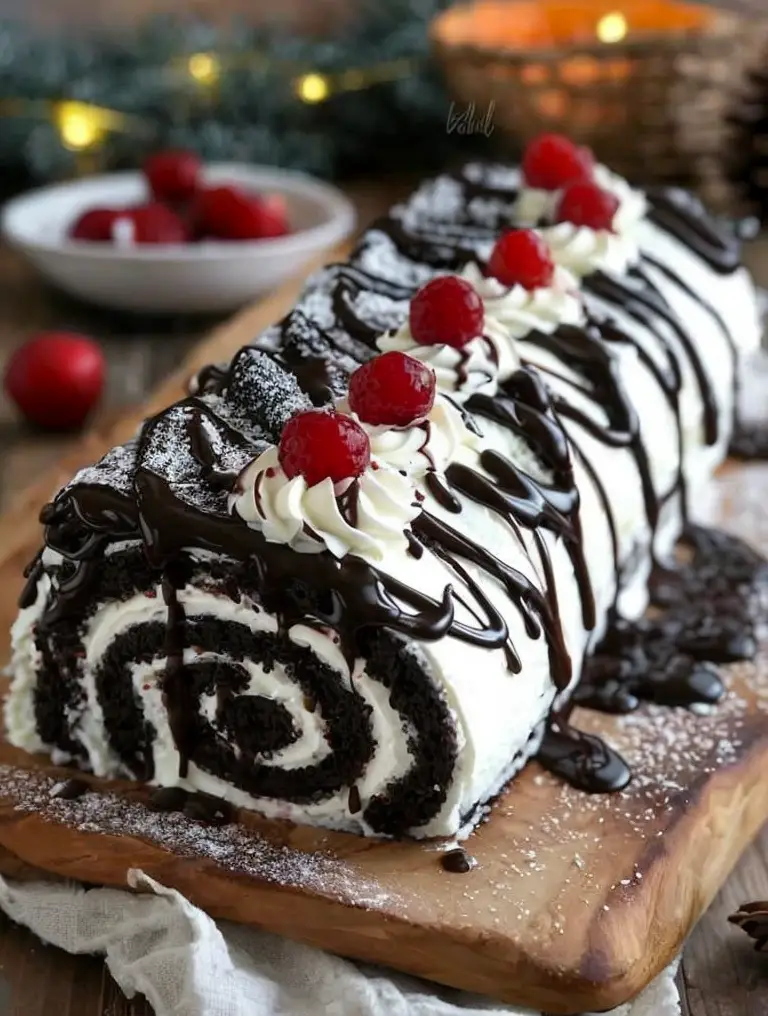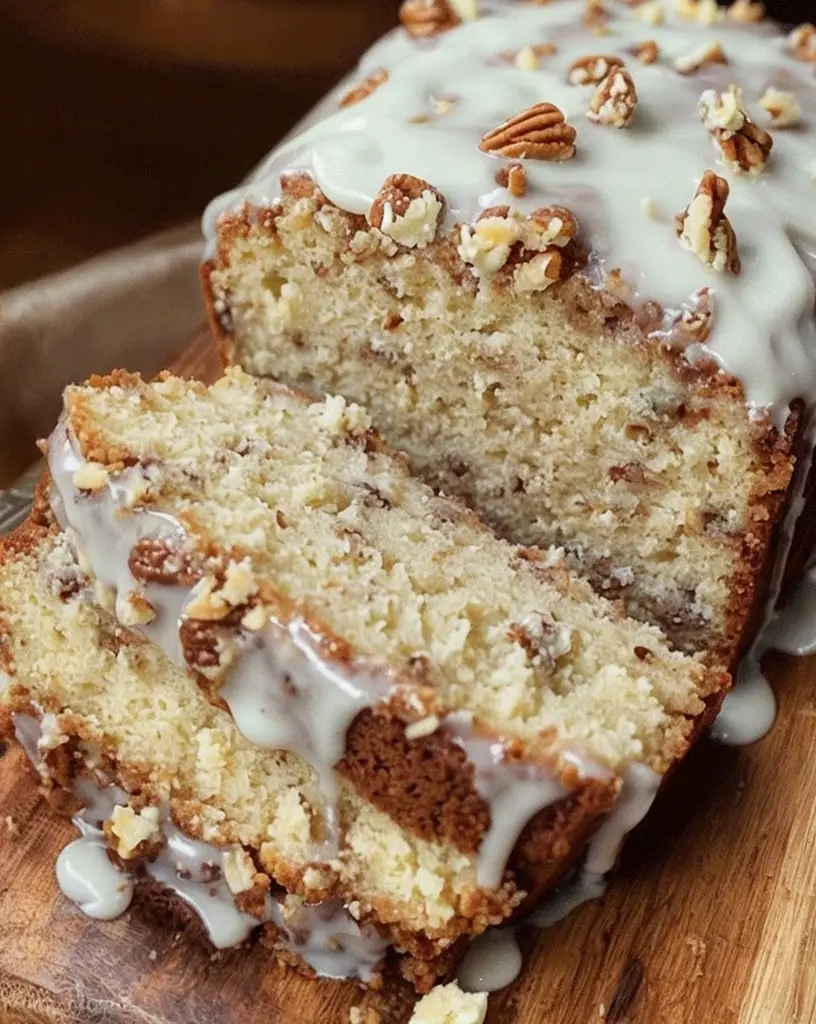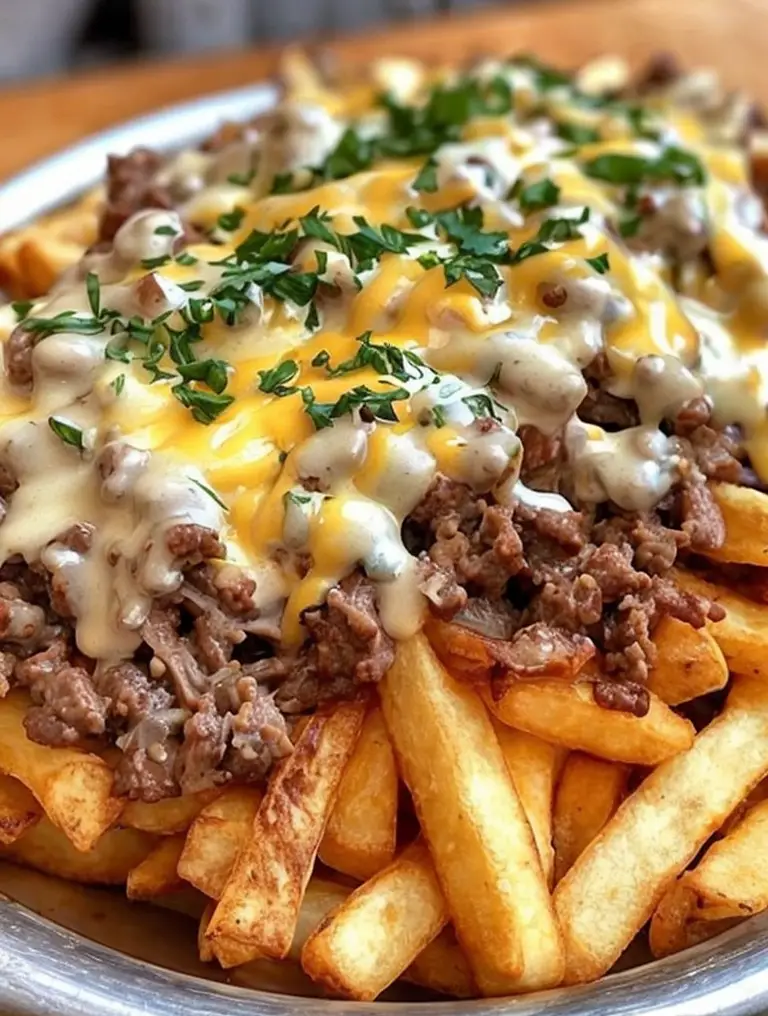Creamy Chicken Pesto Pasta: Easy Gluten-Free Dinner Recipe
Discover the creamy delight of our Chicken Pesto Pasta – a gluten-free easy dinner recipe perfect for any night of the week. Succulent chicken mingles with the aromatic basil flavor of pesto, delivering a taste sensation that is both refreshing and comforting. This dish combines simplicity and elegance, ensuring that even the busiest home cooks can enjoy a restaurant-quality meal at home.
This creamy chicken pesto pasta recipe boasts a perfect balance of creamy and savory elements, making it irresistible to pasta lovers everywhere. Its delightful texture coupled with the vibrant green of the homemade pesto sauce offers a visually stunning plate that appeals to both the eyes and the palate. As you delve into each forkful, the melding flavors of fresh garlic, Parmesan, and nuts will surely transport your senses to a comforting place.
This recipe is incredibly versatile and can adapt to suit any occasion—from a quick midweek dinner to a sophisticated weekend feast. It’s also a crowd-pleaser, making it a great dish to share with family and friends. With each ingredient contributing to its nutritional benefits, this pasta dish is not only delicious but also nourishing.
Quick Recipe Highlights
- Flavor Profile: The creamy chicken pesto pasta has a rich, earthy flavor from the basil pesto, complemented by the succulent taste of seared chicken and tangy Parmesan.
- Texture: This dish offers a luscious creamy texture, enriched with tender chicken pieces and perfectly cooked gluten-free pasta that provide a satisfying bite.
- Aroma: The aroma of fresh basil and garlic fills the kitchen, mingling with the warm scent of toasted pine nuts and Parmesan cheese.
- Visual Appeal: A vibrant green pesto envelops the pasta, paired beautifully with the white and golden hues of cooked chicken for a stunning presentation.
- Skill Level Needed: Ideal for all cooking enthusiasts, from beginners to seasoned chefs, requiring basic cooking techniques and minimal preparation time.
- Special Equipment: Only basic kitchen tools such as a large skillet and a pot are needed, with no special equipment required.
Recipe Overview
- Difficulty Level: This recipe is categorized as easy due to its straightforward steps, with most cooking processes being simple, such as sautéing and simmering.
- Category: Perfect as a main course, it serves as an ideal choice for family dinners, romantic dates, or any special occasion where a comforting dish is desired.
- Cuisine: Rooted in Italian culinary traditions, this pasta dish celebrates the authentic Italian love for pasta, cheese, and herbs.
- Cost: Crafted from commonly available ingredients, this dish is budget-friendly, ensuring a satisfying meal without breaking the bank.
- Season: While pesto is often associated with summer, thanks to its fresh basil, this dish can be enjoyed all year round, offering a nostalgic taste of summer even in the colder months.
- Occasion: Suitable for casual dinners or upscale gatherings, its adaptability makes it a valuable addition to any festive spread or comfort meal.
Why You’ll Love This Recipe
The creamy chicken pesto pasta shines through its robust flavors and creamy textures, creating a delightful culinary experience for your taste buds. The fresh pesto base offers a vibrant contrast to the soft, tender chicken, making each bite a flavorful journey. The versatility and straightforwardness of this dish allow for hassle-free preparation, making it perfect for those seeking an effortless, yet delicious dinner option.
Moreover, this gluten-free recipe ensures inclusivity, making it accessible to those with gluten sensitivities. The nutritional advantages of using lean chicken breast and a homemade pesto packed with fresh basil provide a healthful edge, ensuring you indulge guilt-free. This dish is not only nutritional but also acts as a fantastic social hub, bringing together family and friends to enjoy a delightful home-cooked meal.
Economically, it offers a cost-effective solution for those desiring a gourmet-style dinner without expensive ingredients or multiple trips to specialty stores. Its simplicity translates into reduced cooking stress, letting you focus on enjoying the meal and cherishing moments with loved ones. The creamy chicken pesto pasta is popular not just for its taste but its versatility and ability to fit any dining situation.
Historical Background and Cultural Significance
Pesto, originating from Genoa in the Liguria region of northern Italy, has long been revered for its aromatic basil base tempered by its rich, nutty elements. Traditionally crafted with a mortar and pestle, pesto’s name derives from “pestare,” meaning “to pound,” emphasizing its historical method of preparation. Over time, it evolved to incorporate ingredients native to the region, such as Ligurian olive oil and Grana Padano.
As Italian cuisine spread around the globe, so did its introductory dishes, like the vibrant pesto. Various regions adopted and modified the original pesto recipe, adding unique elements to complement their local culinary landscapes. Chicken pesto pasta, for example, is a modern take that emerged in response to the demand for hearty yet manageable meals, a testament to the recipe’s adaptability to new contexts.
This dish’s evolution encapsulates the hybridization of refined Italian flavors with globally popular ingredients, showcasing its significance in both historical and contemporary culinary narratives. Although many regional versions exist, the essential character and flavorful ingenuity of the original pesto sauce remain universally appreciated. It’s a transparent reflection of Italy’s knack for turning simple ingredients into bold and elegant culinary experiences.
Moreover, the inclusion of chicken in this pasta recipe is a nod to contemporary preferences for balanced meals, combining protein and carbohydrates harmoniously. Today, it’s a beloved staple for those seeking an entrée that combines traditional flavor profiles with modern convenience and diet considerations.
Ingredient Deep Dive
Basil, the star of any traditional pesto, holds significant cultural importance in Italian cuisine. Historically linked to sacred rituals and symbolizing love, basil leaves impart a sweet yet peppery flavor and vibrant color to any dish. Nutritionally, it is rich in antioxidants and vitamin K, essential for bone health and anti-inflammatory properties. While selecting basil, look for bright green leaves free from blemishes to ensure optimal freshness and flavor.
Pine nuts, although often subtle, contribute to pesto’s distinct taste with their creamy, buttery undertones. Rich in healthy fats and crucial vitamins, they add richness to the sauce while supporting heart health. When purchasing pine nuts, opt for ones with a firm texture and milky aroma, storing them in the refrigerator to preserve freshness and prevent rancidity. If a substitute is needed, walnuts offer a reasonable stand-in, providing a similar texture.
Common Mistakes to Avoid
- Using store-bought pesto often lacks the fresh flavor found in homemade versions and can alter the dish’s taste. Opt for making a simple homemade pesto to enhance the dish.
- Overcooking the chicken results in dryness and a less enjoyable texture. Aim for a golden-brown sear and juicy interior by using a meat thermometer to ensure proper cooking.
- Not properly salting the pasta water can lead to bland pasta. Ensure the water is salty like the sea to enhance the flavor of the dish overall.
- Mixing pasta and sauce while the pasta is still wet can result in diluted flavors. Drain pasta well before combining with the sauce.
- Ignoring portion control may lead to ingredient imbalance. Stick to the recommended servings for a balanced flavor profile.
- Leaving pesto exposed can lead to oxidation. Keep it covered or immediately toss with pasta to preserve its vibrant color.
- Adding chicken at the wrong time can cause it to become too tough. Ensure proper timing for tenderness.
- Using low-quality parmesan compromises flavor. Invest in good quality cheese to uphold the dish’s authenticity.
Essential Techniques
Creating a Creamy Pesto Sauce is paramount for this dish’s success. Blending pesto with cream requires a balance—too much can overpower while too little fails to achieve the desired creaminess. Whisk in the cream slowly to create a smooth blend and avoid a split sauce. This technique ensures a perfect marriage of cream and basil that envelops every piece of pasta.
Searing chicken is essential to lock in moisture and create a succulent texture. Start with a hot pan and avoid crowding to achieve a golden crust. Cooking thoroughly without burning is key; once seared, let it rest before slicing to distribute juices evenly. Mastering this ensures flavorful bites in every mouthful of pasta.
Pro Tips for Perfect Creamy Chicken Pesto Pasta
– Toast pine nuts before blending into pesto for added depth and better management of delicate flavors.
– Add a splash of pasta cooking water to the sauce for perfect consistency, using the starch to bind sauce and pasta together seamlessly.
– Utilize a high-quality olive oil for pesto to enhance its flavor, reflecting true Italian authenticity.
– Incorporate fresh lemon zest into the pesto for brightness that elevates the overall dish.
– Always taste your sauce before serving, adjusting seasoning as necessary to ensure flavor harmony.
– Store leftovers correctly by sealing in an airtight container, ensuring you enjoy freshness even the next day.
Variations and Adaptations
Regional variations abound, with Southern Italian processes introducing sun-dried tomatoes for a different taste profile, imparting sweetness and rich flavor. Adapting this dish for seasonal changes can involve using seasonal greens like kale instead of basil in colder months, offering a unique twist with earthy notes. Dietary modifications are straightforward, substituting dairy-free parmesan and cream alternatives for a lactose-intolerant-friendly dish. Flavor variations could involve adding roasted cherry tomatoes for a burst of sweetness or substituting grilled shrimp for an upscale seafood version. Presentation alternatives include serving this dish with a sprinkle of edible flowers for an elegant touch or tossing in a vibrant salad for added freshness.
Serving and Presentation Guide
Plating this dish requires attention to color and texture. Use a spacious plate to allow the vibrant pesto sauce to shine. Garnish with freshly grated parmesan and toasted pine nuts for added texture and visual appeal. Traditional accompaniments would involve a rustic Italian bread that complements creamy pasta. Modern serving suggestions might incorporate pairing with a crisp salad featuring balsamic dressing for balance. Serve pasta at optimal warmth, ensuring flavors meld together; consider smaller servings for an intimate, gourmet experience.
Wine and Beverage Pairing
Pair this pasta with a Chardonnay for its complementary buttery notes that match the creamy sauce, enhancing the chicken’s flavor. For non-alcoholic alternatives, opt for a sparkling lemon-infused water to refresh the palate. If coffee is desired after the meal, a smooth, medium roast can provide a pleasant conclusion. Serving suggestions include chilled whites or a lightly carbonated water, keeping temperatures cooler to contrast with the warm, creamy pasta.
Storage and Shelf Life
Store leftover creamy chicken pesto pasta in an airtight container, ensuring it’s kept in the refrigerator to maintain freshness for up to 3 days. Avoid exposing to air to prevent oxidation and flavor loss. Reheat gently on the stovetop, adding a bit of cream to rejuvenate the sauce’s texture, or microwave with a cover to prevent moisture loss. The pasta can be frozen, but expect some texture changes; ensure to thoroughly thaw before reheating.
Make Ahead Strategies
This dish can be prepped in parts; consider making the pesto up to two days in advance, storing it in the fridge in airtight conditions. Cook the chicken a day before, chilling it to minimize prep time on busy cooking days. Assembled pasta should be cooked just before serving to maintain creamy idealness. Reheat the sauce by thinning with additional cream if it thickens too much in storage. Add fresh elements like basil just before serving.
Scaling Instructions
To halve the recipe, simply adjust ingredient quantities proportionally, ensuring consistent flavor. Doubling or tripling may necessitate using larger cooking equipment, such as wider pans to accommodate increased volume, ensuring even heat distribution. Modifications in timing should reflect these changes, factoring in longer cooking times for increased portions. Larger batches can be divided post-cooking into separate containers, maintaining fresh servings for each meal set aside.
Nutritional Deep Dive
This pasta offers a balanced macro profile, combining carbohydrates from pasta, lean protein from chicken and healthy fats introduced by olive oil and nuts. Micronutrient benefits include the basil’s vitamin A and K contribution and garlic’s antioxidant properties. With proper portion control, this dish supports weight management goals without sacrificing taste. Serving size awareness is crucial; complement with a light salad to complete a well-rounded meal.
Dietary Adaptations
For gluten-free variations, ensure the pasta used is certified gluten-free, maintaining the overall dish integrity. Dairy-free adjustments involve substituting almond milk or vegan cream products, with nutritional yeast in place of parmesan for flavor preservation. Low-carb enthusiasts might swap the pasta for zucchini noodles, cutting carbohydrate load significantly while preserving pesto’s flavor impact.
Troubleshooting Guide
Address texture issues by ensuring sauce consistency through the addition of pasta water to stabilize creamy textures. Correct flavor imbalances by adjusting seasoning with salt, lemon juice or pepper to suit taste preferences. For temperature problems, opt for gentle reheating methods to reinstate optimal warmth without drying out. Equipment challenges may arise – verify pan sizes and burner heats to ensure uniform cooking in kitchen environments. Ingredient substitutions should maintain balance; use suggested replacements to keep flavor profiles intact.
Recipe Success Stories
Recipes incorporating personalized twists have gathered a loyal following, and reader adaptations include adding roasted red peppers or asparagus for a pop of color and additional nutrients. Community feedback applauds the simplicity yet richness of the dish, perfect for entertaining without fuss. Photography tips suggest natural lighting to enhance the pesto’s vibrant colors, with garnish highlights adding depth and allure to each image.
Frequently Asked Questions
Can I use other nuts instead of pine nuts in the pesto? Yes, many find success with walnuts or almonds, providing a similar texture with unique flavor undertones.
How can I make this dish spicy? Add red pepper flakes to the sauce or incorporate diced jalapeños for a fiery kick that complements creamy flavors.
Is it possible to prepare this dish vegan? Absolutely, substitute chicken with grilled portobello mushrooms and use vegan cream and cheese for the sauce.
What’s the best way to reheat without losing creaminess? Reheat over low heat and add a splash of cream to maintain the sauce’s signature creaminess.
Can I make pesto without a food processor? Yes, use a mortar and pestle to manually blend ingredients, achieving a more authentic, rustic texture.
What’s an ideal side dish to pair with this pasta? A crisp, green salad with light vinaigrette complements the pasta’s richness, offering a refreshing balance.
How do I ensure the chicken stays juicy? Sear at high heat, then reduce and cook through without cutting immediately to retain internal juices.
How long can I store homemade pesto? Fresh pesto lasts in the fridge for about a week, or freeze for longer storage and use within three months.
Can I use dried basil instead of fresh? Fresh basil is recommended for optimal flavor, but dried basil can be used in a pinch, though the flavor will be less vibrant.
Is frying the pine nuts necessary? Toasting amplifies their flavor, but this step can be skipped if you prefer a milder nut presence in your pesto.
Additional Resources
For a deeper dive into pesto’s versatility, explore recipes tailored for summer salads and sandwiches, utilizing its fresh flavors across diverse culinary applications. Technique guides on achieving the perfect pasta consistency can enhance your confidence in boiling methods. Discover ingredient information establishing the health benefits of core components like basil and olive oil. Seasonal variations include transitioning this dish for festive occasions with holiday-specific substitutions. For equipment recommendations, explore options that facilitate easier pasta preparation and sauce making.
Join the Conversation
Engage with our community and share your personal takes on this creamy chicken pesto pasta recipe. Social media platforms serve as a fantastic space to connect, offering tips and insights into unique twists and flavorful add-ons. We encourage photography showcases, inviting you to post your creations that capture the vibrant allure of this dish. Share reviews and adaptations you’ve found successful, contributing to an ever-growing collection of culinary achievements. Our community thrives on such interactions, each story adding a layer of shared culinary enthusiasm.
The Recipe
Creamy Chicken Pesto Pasta
Serves: 4
Prep Time: 15 mins
Cook Time: 20 mins
Total Time: 35 mins
Kitchen Equipment Needed
- Large pot
- Large skillet
- Blender or food processor
- Wooden spoon
- Cutting board
- Knife
Ingredients
- 1 lb gluten-free pasta
- 1 lb chicken breast, sliced
- 2 cups fresh basil leaves
- 1/3 cup pine nuts, toasted
- 2 cloves garlic
- 1/2 cup grated Parmesan cheese
- 1/2 cup olive oil
- 1/2 cup heavy cream
- Salt and pepper to taste
- 1 tbsp olive oil for cooking
Directions
- Begin by cooking the gluten-free pasta according to package instructions. Drain and set aside.
- In a skillet, heat 1 tbsp of olive oil over medium heat. Add the chicken slices, seasoning with salt and pepper, and cook until golden brown and cooked through. Remove from heat and set aside.
- For the pesto, combine basil, toasted pine nuts, garlic, Parmesan cheese, and 1/2 cup olive oil in a blender or food processor. Blend until smooth.
- In the same skillet used for the chicken, add the pesto and heavy cream, heating gently. Do not boil.
- Combine the cooked pasta with the creamy pesto sauce, adding chicken slices. Toss well to coat evenly.
- Serve warm, garnished with additional Parmesan and pine nuts if desired.
Recipe Notes
- To make this dish dairy-free, substitute heavy cream with coconut cream and use nutritional yeast instead of Parmesan.
- Add a splash of lemon juice to the pesto for a zesty twist.
- For added flavor, consider grilling the chicken for a smoky edge.




